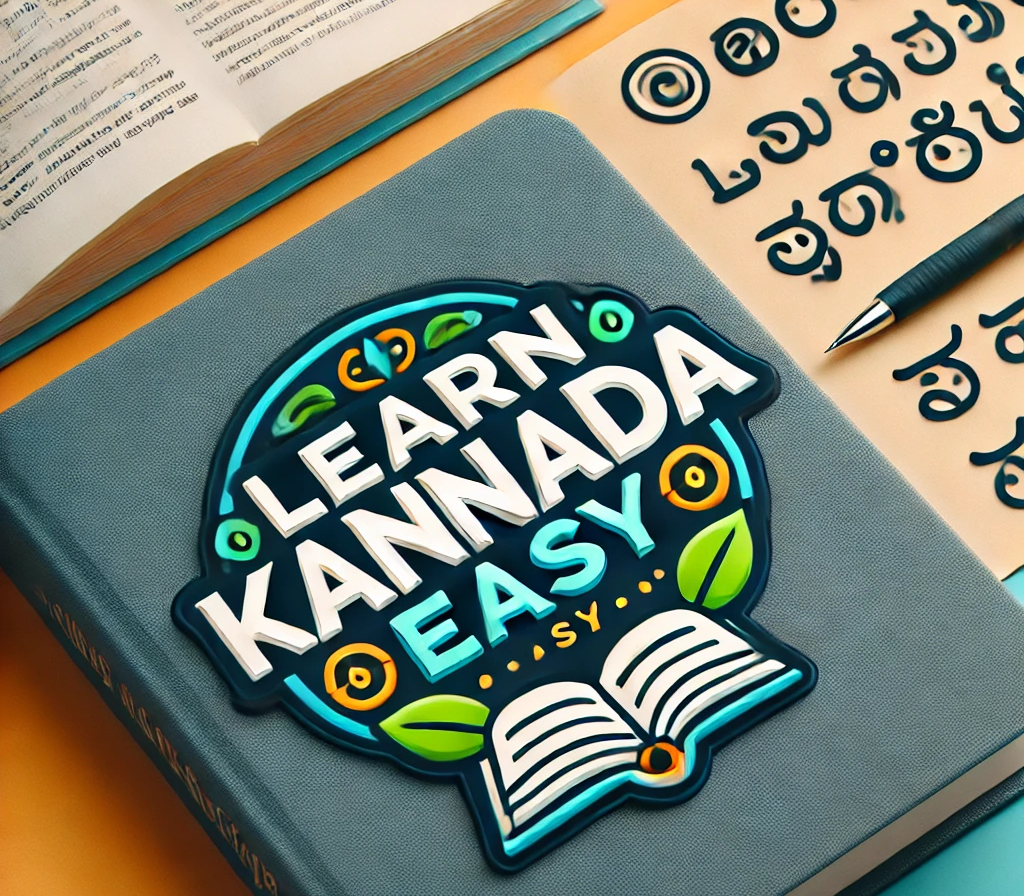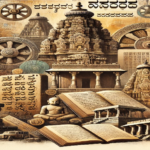Master common Kannada words for directions through detailed conversations with accurate transliterations.
Key Kannada Directions
In this guide, we will cover essential directions in Kannada, their meanings, and transliterations to help you better navigate and understand Kannada when asking for or giving directions.
ಎಡ (Eda)
Transliteration: Eda
ಬಲ (Bala)
Transliteration: Bala
ನೇರ (Nera)
Transliteration: Nera
ಹತ್ತಿರ (Hattira)
Transliteration: Hattira
ದೂರ (Dura)
Transliteration: Dura
ಹಿಂಭಾಗ (Himbaga)
Transliteration: Himbaga
ಮುಂದೆ (Munde)
Transliteration: Munde
ಇಲ್ಲಿ (Illi)
Transliteration: Illi
ಅಲ್ಲಿ (Alli)
Transliteration: Alli
ತಿರುಗಿ (Tirugi)
Transliteration: Tirugi
ಹೋಗು (Hogu)
Transliteration: Hogu
ನಿಲ್ಲಿಸು (Nillisu)
Transliteration: Nillisu
ಎಡಕ್ಕೆ ತಿರುಗಿ (Edakke Tirugi)
Transliteration: Edakke Tirugi
ಬಲಕ್ಕೆ ತಿರುಗಿ (Balakke Tirugi)
Transliteration: Balakke Tirugi
Extended Sample Conversations in Kannada
Conversation 1: Asking for Directions to the Bus Stop
Person 1: “ನಾನು ಬಸ್ ನಿಲ್ದಾಣಕ್ಕೆ ಹೇಗೆ ಹೋಗಬಹುದು?”
(Nānu bas niḷḍāṇakke hege hōgabahudu?) – How can I go to the bus stop?
Person 2: “ನೀವು ನೇರವಾಗಿ ಹೋಗಿ, ನಂತರ ಬಲಕ್ಕೆ ತಿರುಗಿ. ಬಸ್ ನಿಲ್ದಾಣ ಅಲ್ಲಿಯೇ ಇದೆ.”
(Nīvu nēṛavāgi hōgi, nantara balakke tirugi. Bas niḷḍāṇa alliyē ide.) – Go straight, then turn right. The bus stop is right there.
Person 1: “ಅದು ಹತ್ತಿರವೇ?”
(Adu hattiravē?) – Is it nearby?
Person 2: “ಹೌದು, ಅದು ಇಲ್ಲಿಂದ 100 ಮೀಟರ್ ದೂರದಲ್ಲಿದೆ.”
(Haudu, adu illinda 100 mīṭar dūradaḷḷide.) – Yes, it’s 100 meters away from here.
Person 1: “ಧನ್ಯವಾದಗಳು!”
(Dhanyavādagaḷu!) – Thank you!
Conversation 2: Asking for Directions to the Railway Station
Person 1: “ನಾನು ರೈಲು ನಿಲ್ದಾಣಕ್ಕೆ ಹೇಗೆ ಹೋಗಬಹುದು?”
(Nānu railu niḷḍāṇakke hege hōgabahudu?) – How can I go to the railway station?
Person 2: “ನೀವು ನೇರವಾಗಿ ಹೋಗಿ, ನಂತರ ಎಡಕ್ಕೆ ತಿರುಗಿ. ರೈಲು ನಿಲ್ದಾಣ ಅಲ್ಲಿಯೇ ಇದೆ.”
(Nīvu nēṛavāgi hōgi, nantara ēḍakke tirugi. Railu niḷḍāṇa alliyē ide.) – Go straight, then turn left. The railway station is right there.
Person 1: “ಅದು ದೂರವೇ?”
(Adu dūravē?) – Is it far?
Person 2: “ಅದು ಇಲ್ಲಿಂದ 500 ಮೀಟರ್ ದೂರದಲ್ಲಿದೆ.”
(Adu illinda 500 mīṭar dūradaḷḷide.) – It’s 500 meters away from here.
Person 1: “ಧನ್ಯವಾದಗಳು!”
(Dhanyavādagaḷu!) – Thank you!
Conversation 3: Asking for Directions to the Mall
Person 1: “ನಾನು ಮಾಲ್ಗೆ ಹೇಗೆ ಹೋಗಬಹುದು?”
(Nānu māl-ge hege hōgabahudu?) – How can I go to the mall?
Person 2: “ನೀವು ನೇರವಾಗಿ ಹೋಗಿ, ನಂತರ ಬಲಕ್ಕೆ ತಿರುಗಿ. ಮಾಲ್ ಹತ್ತಿರವೇ ಇದೆ.”
(Nīvu nēṛavāgi hōgi, nantara balakke tirugi. Māl hattiravē ide.) – Go straight, then turn right. The mall is nearby.
Person 1: “ಅದು ಬಹುದೂರವೇ?”
(Adu bahudūravē?) – Is it very far?
Person 2: “ಇಲ್ಲ, ಅದು ಇಲ್ಲಿಂದ 200 ಮೀಟರ್ ದೂರದಲ್ಲಿದೆ.”
(Illa, adu illinda 200 mīṭar dūradaḷḷide.) – No, it’s 200 meters away from here.
Person 1: “ಧನ್ಯವಾದಗಳು!”
(Dhanyavādagaḷu!) – Thank you!
Conversation 4: Asking for Directions to a Temple
Person 1: “ನಾನು ದೇವಸ್ಥಾನಕ್ಕೆ ಹೇಗೆ ಹೋಗಬಹುದು?”
(Nānu dēvasthānakke hege hōgabahudu?) – How can I go to the temple?
Person 2: “ನೀವು ನೇರವಾಗಿ ಹೋಗಿ, ನಂತರ ಎಡಕ್ಕೆ ತಿರುಗಿ. ದೇವಸ್ಥಾನ ಅಲ್ಲಿಯೇ ಇದೆ.”
(Nīvu nēṛavāgi hōgi, nantara ēḍakke tirugi. Dēvasthāna alliyē ide.) – Go straight, then turn left. The temple is right there.
Person 1: “ಅದು ಹತ್ತಿರವೇ?”
(Adu hattiravē?) – Is it nearby?
Person 2: “ಹೌದು, ಅದು ಇಲ್ಲಿಂದ 100 ಮೀಟರ್ ದೂರದಲ್ಲಿದೆ.”
(Haudu, adu illinda 100 mīṭar dūradaḷḷide.) – Yes, it’s 100 meters away from here.
Person 1: “ಧನ್ಯವಾದಗಳು!”
(Dhanyavādagaḷu!) – Thank you!
Conversation 5: Asking for Directions to a Hospital
Person 1: “ನಾನು ಆಸ್ಪತ್ರೆಗೂ ಹೇಗೆ ಹೋಗಬಹುದು?”
(Nānu āspatre-gū hege hōgabahudu?) – How can I go to the hospital?
Person 2: “ನೀವು ನೇರವಾಗಿ ಹೋಗಿ, ನಂತರ ಬಲಕ್ಕೆ ತಿರುಗಿ. ಆಸ್ಪತ್ರೆ ಅಲ್ಲಿಯೇ ಇದೆ.”
(Nīvu nēṛavāgi hōgi, nantara balakke tirugi. Āspatre alliyē ide.) – Go straight, then turn right. The hospital is right there.
Person 1: “ಅದು ಹತ್ತಿರವೇ?”
(Adu hattiravē?) – Is it nearby?
Person 2: “ಹೌದು, ಅದು ಇಲ್ಲಿಂದ 150 ಮೀಟರ್ ದೂರದಲ್ಲಿದೆ.”
(Haudu, adu illinda 150 mīṭar dūradaḷḷide.) – Yes, it’s 150 meters away from here.
Person 1: “ಧನ್ಯವಾದಗಳು!”
(Dhanyavādagaḷu!) – Thank you!
Conclusion
Learning to ask for and give directions in Kannada is crucial for navigating your way around Kannada-speaking regions. Whether you’re traveling or living in Karnataka, these phrases will help you get around confidently. Practice these conversations regularly to improve your understanding and fluency.
We hope this detailed guide helps you on your Kannada learning journey! Stay confident and keep practicing!


